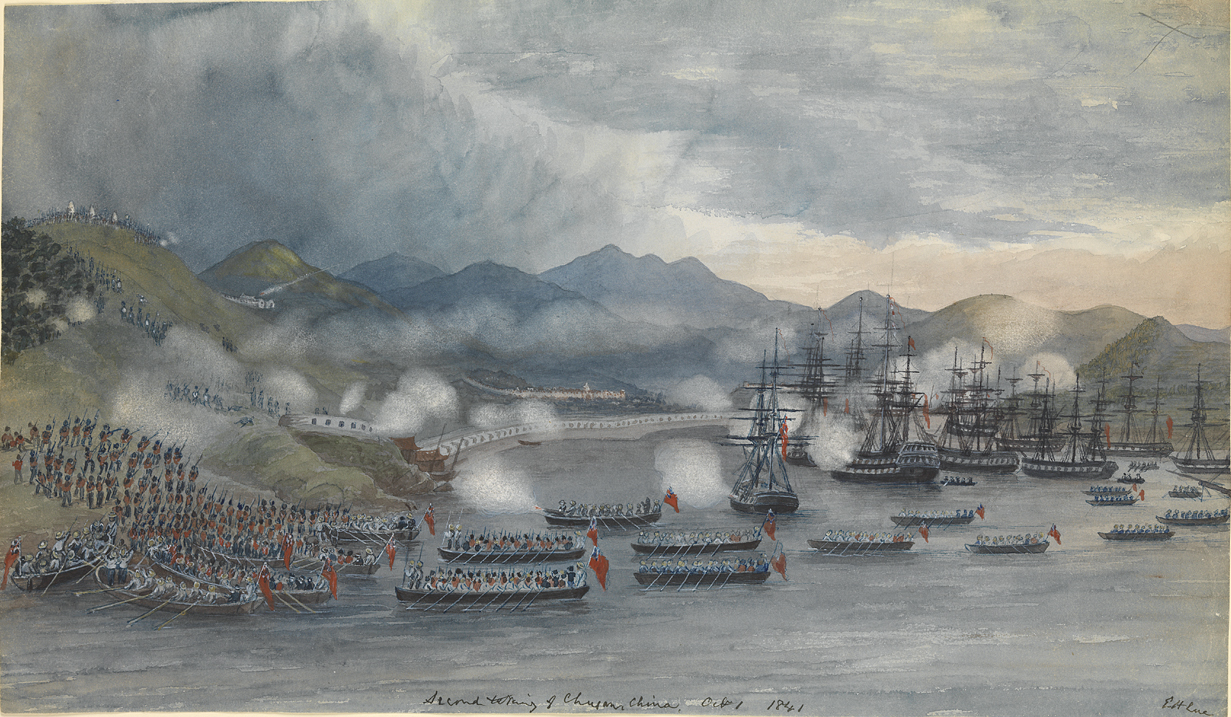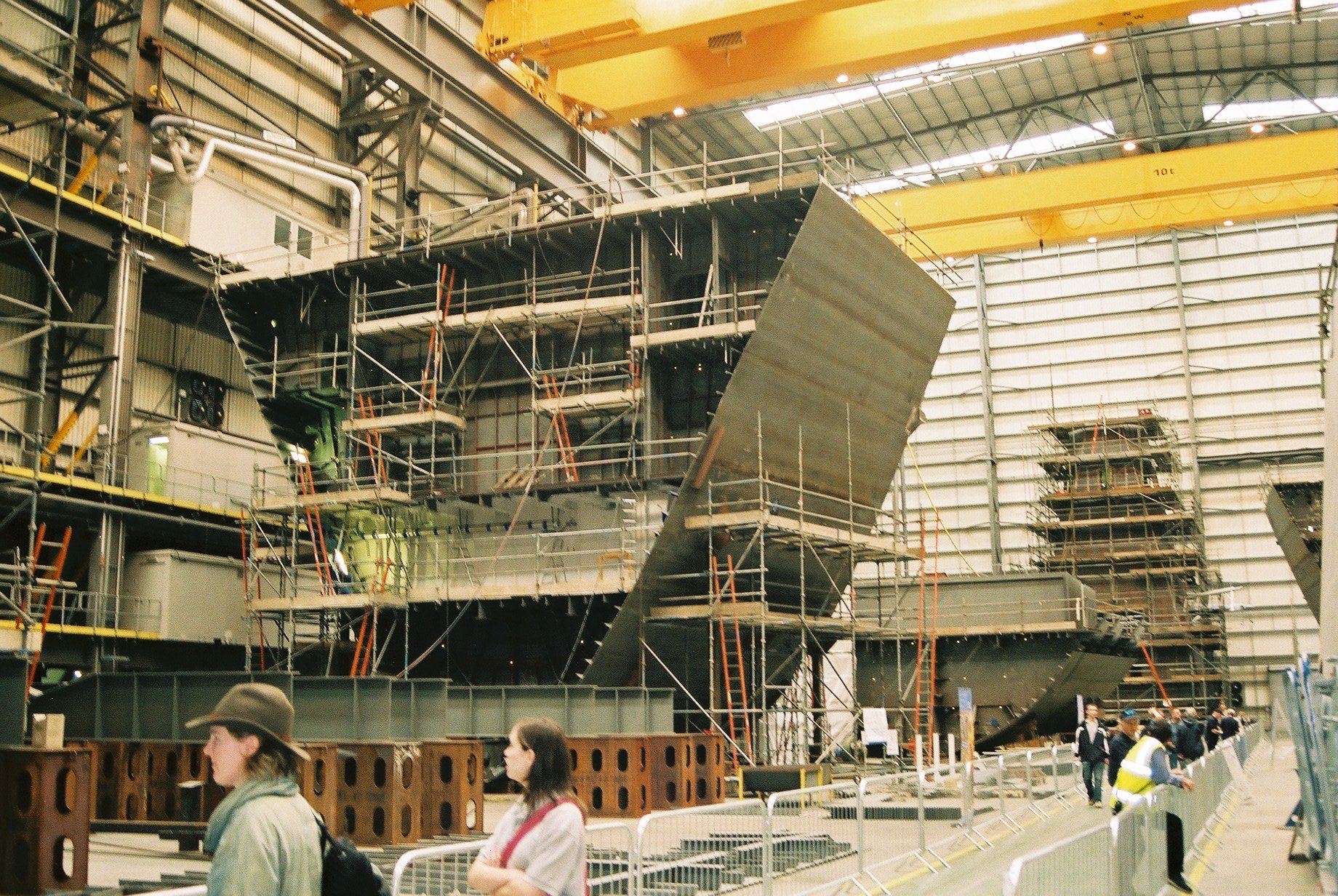|
Royal Corps Of Naval Constructors
The Royal Corps of Naval Constructors (RCNC) is an institution of the British Royal Navy and Admiralty for training in naval architecture, marine, electrical and weapon engineering. It was established by Order in Council in August 1883, on the recommendation of the naval architect Sir William White. Its precursor was the Royal School of Naval Architecture, London. According to the Royal Navy's Books of Reference 3 Chapter 46, it is a "civilian corps and an integrated part of the Defence Engineering & Science Group". Members in certain posts who do not hold commissions are eligible to wear a uniform similar to that of the Royal Navy and are accorded the same respect as commissioned officers. History From Tudor times, the ships of the Royal Navy were built in the Royal Dockyards under the supervision of the Master Shipwright and to the design of the Surveyor of the Navy who was always an ex-Master Shipwright. In 1805, seeing the growing application of science in industry, Lo ... [...More Info...] [...Related Items...] OR: [Wikipedia] [Google] [Baidu] |
Royal Navy
The Royal Navy (RN) is the naval warfare force of the United Kingdom. It is a component of His Majesty's Naval Service, and its officers hold their commissions from the King of the United Kingdom, King. Although warships were used by Kingdom of England, English and Kingdom of Scotland, Scottish kings from the early Middle Ages, medieval period, the first major maritime engagements were fought in the Hundred Years' War against Kingdom of France, France. The modern Royal Navy traces its origins to the English Navy of the early 16th century; the oldest of the British Armed Forces, UK's armed services, it is consequently known as the Senior Service. From the early 18th century until the World War II, Second World War, it was the world's most powerful navy. The Royal Navy played a key part in establishing and defending the British Empire, and four Imperial fortress colonies and a string of imperial bases and coaling stations secured the Royal Navy's ability to assert naval superior ... [...More Info...] [...Related Items...] OR: [Wikipedia] [Google] [Baidu] |
Industrial Revolution
The Industrial Revolution, sometimes divided into the First Industrial Revolution and Second Industrial Revolution, was a transitional period of the global economy toward more widespread, efficient and stable manufacturing processes, succeeding the Second Agricultural Revolution. Beginning in Kingdom of Great Britain, Great Britain around 1760, the Industrial Revolution had spread to continental Europe and the United States by about 1840. This transition included going from craft production, hand production methods to machines; new Chemical industry, chemical manufacturing and Puddling (metallurgy), iron production processes; the increasing use of Hydropower, water power and Steam engine, steam power; the development of machine tools; and rise of the mechanisation, mechanised factory system. Output greatly increased, and the result was an unprecedented rise in population and population growth. The textile industry was the first to use modern production methods, and textiles b ... [...More Info...] [...Related Items...] OR: [Wikipedia] [Google] [Baidu] |
History Of The Royal Navy
The Royal Navy (RN) is the naval warfare force of the United Kingdom. It is a component of His Majesty's Naval Service, and its officers hold their commissions from the King of the United Kingdom, King. Although warships were used by Kingdom of England, English and Kingdom of Scotland, Scottish kings from the early Middle Ages, medieval period, the first major maritime engagements were fought in the Hundred Years' War against Kingdom of France, France. The modern Royal Navy traces its origins to the English Navy of the early 16th century; the oldest of the British Armed Forces, UK's armed services, it is consequently known as the Senior Service. From the early 18th century until the World War II, Second World War, it was the world's most powerful navy. The Royal Navy played a key part in establishing and defending the British Empire, and four Imperial fortress colonies and a string of imperial bases and coaling stations secured the Royal Navy's ability to assert naval superior ... [...More Info...] [...Related Items...] OR: [Wikipedia] [Google] [Baidu] |
Marine Engineering Organizations
Marine is an adjective meaning of or pertaining to the sea or ocean. Marine or marines may refer to: Ocean * Maritime (other) * Marine art * Marine biology * Marine current power * Marine debris * Marine energy * Marine habitats * Marine life * Marine pollution Military * Marines, a naval-based infantry force ** United States Marine Corps ** Royal Marines of the UK ** Brazilian Marine Corps ** Spanish Marine Infantry ** Fusiliers marins (France) ** Indonesian Marine Corps ** Republic of China Marine Corps ** Republic of Korea Marine Corps ** Royal Thai Marine Corps *"Marine" also means "navy" in several languages: ** Austro-Hungarian Navy () ** Belgian Navy (, , ) ** Royal Canadian Navy () *** Provincial Marine (1796–1910), a predecessor to the Royal Canadian Navy ** Navy of the Democratic Republic of the Congo () ** Royal Danish Navy () ** Finnish Navy (, ) ** French Navy () ** Gabonese Navy () ** German Navy () ** Royal Moroccan Navy () ** Royal Netherlands Navy ... [...More Info...] [...Related Items...] OR: [Wikipedia] [Google] [Baidu] |
1883 Establishments In The United Kingdom
Events January * January 4 – ''Life'' magazine is founded in Los Angeles, California, United States. * January 10 – A fire at the Newhall Hotel in Milwaukee, Wisconsin, United States, kills 73 people. * January 16 – The Pendleton Civil Service Reform Act, establishing the United States civil service, is passed. * January 19 – The first electric lighting system employing overhead wires begins service in Roselle, New Jersey, United States, installed by Thomas Edison. February * February 15 – Tokyo Electrical Lightning Grid, predecessor of Tokyo Electrical Power (TEPCO), one of the largest electrical grids in Asia and the world, is founded in Japan. * February 16 – The ''Ladies' Home Journal'' is published for the first time, in the United States. * February 23 – Alabama becomes the first U.S. state to enact an antitrust law. * February 28 – The first vaudeville theater is opened, in Boston, Massachusetts. * February &ndas ... [...More Info...] [...Related Items...] OR: [Wikipedia] [Google] [Baidu] |
RCNC Lt
The Royal Corps of Naval Constructors (RCNC) is an institution of the British Royal Navy and Admiralty for training in naval architecture, marine, electrical and weapon engineering. It was established by Order in Council in August 1883, on the recommendation of the naval architect Sir William White. Its precursor was the Royal School of Naval Architecture, London. According to the Royal Navy's Books of Reference 3 Chapter 46, it is a "civilian corps and an integrated part of the Defence Engineering & Science Group". Members in certain posts who do not hold commissions are eligible to wear a uniform similar to that of the Royal Navy and are accorded the same respect as commissioned officers. History From Tudor times, the ships of the Royal Navy were built in the Royal Dockyards under the supervision of the Master Shipwright and to the design of the Surveyor of the Navy who was always an ex-Master Shipwright. In 1805, seeing the growing application of science in industry, Lo ... [...More Info...] [...Related Items...] OR: [Wikipedia] [Google] [Baidu] |
Some Of The Technical Officers On The Allied Naval Command Expeditionary Force Who Were Responsible For The Basic Planning And Co-ordination Of The Repair, Recovery, And Fuelling Organisation For Ships And Craft Operatin A26669
Some may refer to: *''some'', an English word used as a determiner and pronoun; see use of ''some'' *The term associated with the existential quantifier *"Some", a song by Built to Spill from their 1994 album ''There's Nothing Wrong with Love'' *Socialist-oriented market economy, the Vietnamese economic system occasionally abbreviated SOME *Social market economy, the German socioeconomic model abbreviated SOME *So Others Might Eat (SOME), a Washington, D.C.–based non-profit organization *SoMe, short for social media * ''Some'' (film), a 24 film * "Some" (song), a duet by Junggigo and Soyou *Some & Any Some & Any was a German pop duo, formed during the eighth season of the German television talent show ''Popstars''. The group consisted of then-18-year-old Vanessa Meisinger and 20-year-old half-Brazilian, half-Swiss Leonardo Ritzmann. The seas ..., German pop duo See also * Some (surname) {{disambig ... [...More Info...] [...Related Items...] OR: [Wikipedia] [Google] [Baidu] |
Type 45 Destroyer
The Type 45 destroyer, also known as the D or ''Daring'' class, is a class of six guided-missile destroyers built for the United Kingdom's Royal Navy in the early 21st century. The class is primarily designed for anti-aircraft and anti-missile warfare and is built around the PAAMS (Sea Viper) air-defence system using the SAMPSON Active electronically scanned array (AESA) and the S1850M long-range radars. The first three destroyers were assembled by BAE Systems Surface Fleet Solutions from partially prefabricated "blocks" built at different shipyards; the remaining three were built by BAE Systems Maritime – Naval Ships. The first ship in the ''Daring'' class, HMS ''Daring'', was launched on 1 February 2006 and commissioned on 23 July 2009. The Type 45 destroyers were built to replace the Type 42 (''Sheffield''-class) destroyers that had served during the Falklands War, with the last Type 42 being decommissioned in 2013. The National Audit Office reported that, during a ... [...More Info...] [...Related Items...] OR: [Wikipedia] [Google] [Baidu] |
Nathaniel Barnaby
Sir Nathaniel Barnaby, (25 February 1829 – 16 June 1915) was Chief Constructor of the Royal Navy from 1872 to 1885. Biography Born on 25 February 1829 in Chatham, Barnaby began his career as a naval apprentice at Sheerness in 1843. He won a scholarship to Portsmouth Naval School in 1848. On qualifying in 1852, he became a draughtsman at Woolwich dockyard. He was invited to join the Department of Naval Construction in 1854 to take part in designing the first British ironclad warship, HMS ''Warrior''. Sir Edward Reed became Chief Constructor in 1863. He was married to Barnaby's sister, and he made Barnaby head of his staff. In this post, he worked on the majority of British warships, up to the time of HMS ''Monarch''. When Reed retired in 1872, Barnaby was elevated to "President of the Council of Construction and Chief Naval Architect." Always referred to as the "Chief Constructor," the title was changed in 1875 to "Director of Naval Construction" (DNC). Nathaniel Bar ... [...More Info...] [...Related Items...] OR: [Wikipedia] [Google] [Baidu] |





